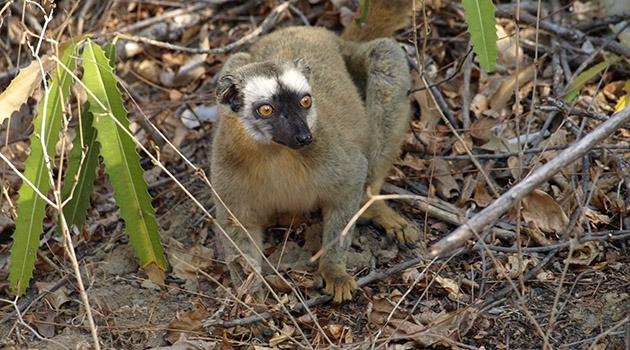Scientists: Madagascar’s unique biodiversity in grave danger
Madagascar has an enormous biodiversity, with most of the plant and animal species found nowhere else on earth. But the rich life on the island is in grave danger and governments and environmental organisations must help. This is claimed by a large number of researchers, including from Uppsala University, in the journal Science.
In two new papers published in Science, researchers from Umeå University, Gothenburg University, Uppsala University and more than 50 other global organisations have undertaken a major review of Madagascar’s extraordinary biodiversity.
Their analyses show that overexploitation (the direct hunting and harvesting of species) and unsustainable agricultural practices affect 62.1 and 56.8 percent of vertebrate species, respectively, and each affect nearly 90 percent of all plant species. The researchers conclude that there is an urgent need for action.
Modelling the extinction threats
One of the authors of the papers is Tobias Andermann, Assistant professor at Department of Organismal Biology at Uppsala University. He has been involved in the data analysis, in particular in modelling the extinction threats for individual species.
“This extensive review project has resulted in a very informative overview of the origination and current state of biodiversity in one of the most biodiverse and threatened places on this planet: Madagascar. A great demonstration of how existing data can inform us about complex natural patterns, when carefully compiled and analysed,” says Tobias Andermann.
Madagascar is one of the world’s foremost biodiversity hotspots, with a unique assemblage of plants, animals, and fungi, the majority of which evolved on the island and occur nowhere else.
Communities face challenges
Madagascar’s rich biodiversity, particularly its diverse flora, has provided many opportunities for human utilization. The challenge is to find a balance between use of biodiversity and conserving the integrity of protected areas. The majority of Madagascar’s over 28 million inhabitants live outside of, but often very close to, protected areas. These communities face challenges connected to widespread poverty, which itself is related to degradation of natural capital in the landscape, limited access to formal education, health care and regulatory issues including land tenure.
The researchers frame biodiversity as the greatest opportunity and most valuable asset for Madagascar’s future development - a key resource for the sustainable future and well-being of its citizens.
“The landscape and biodiversity of Madagascar has dramatically changed during the last decade. It is unthinkable that we will lose this richness if no urgent actions are taken. We must look for urgent economic and social solutions to face the dependence on natural resources. It is the responsibility of everyone, including policymakers, local communities, civil societies”, says Hélène Ralimanana at Kew Madagascar Conservation Centre and first author of one of the studies.
Publications:
Alexandre Antonelli et al. (2022). Madagascar’s extraordinary biodiversity: Evolution, distribution, and use. Science. DOI: 10.1126/science.abf0869
Hélène Ralimanana et al. (2022). Madagascar’s extraordinary biodiversity: Threats and opportunities. Science. DOI: 10.1126/science.adf1466

